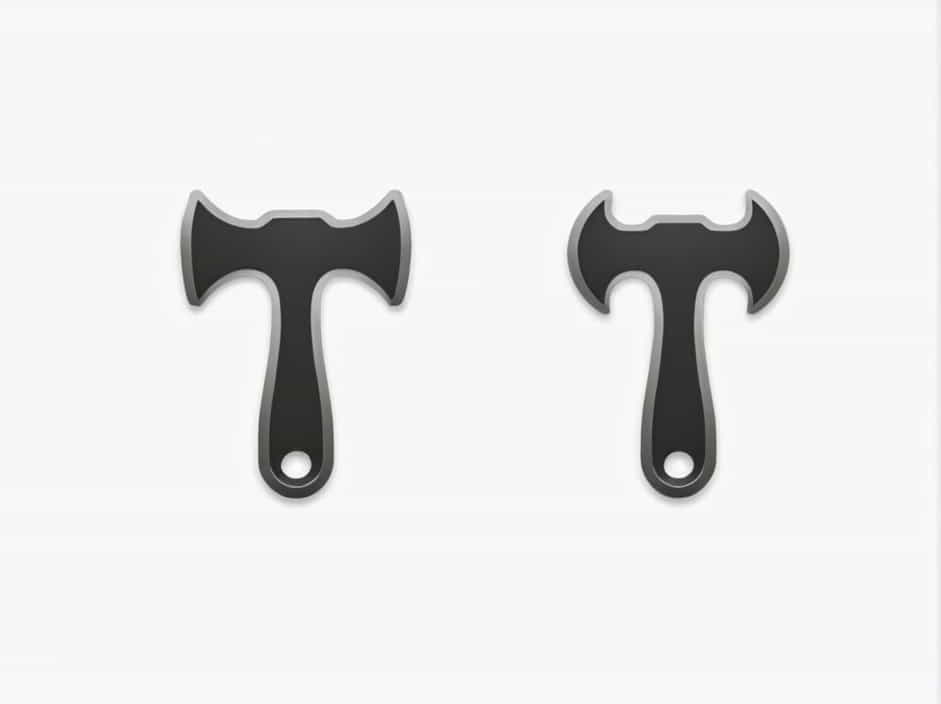The hammer (malleus), anvil (incus), and stirrup (stapes) are the three smallest bones in the human body. These tiny bones, located in the middle ear, play a crucial role in hearing by transmitting sound vibrations from the eardrum to the inner ear. Without them, the ability to hear sounds clearly would be significantly impaired.
In this topic, we will explore the structure, function, and importance of the hammer, anvil, and stirrup, along with their role in the auditory system and common disorders that affect them.
What Are the Hammer, Anvil, and Stirrup?
These three bones, collectively known as the ossicles, form a small but vital chain inside the middle ear. Each bone has a specific shape and function:
- Malleus (Hammer) – Resembles a hammer and is attached to the eardrum.
- Incus (Anvil) – A bridge-like bone that connects the malleus to the stapes.
- Stapes (Stirrup) – The smallest bone in the human body, shaped like a stirrup, and connected to the inner ear.
Together, they amplify sound vibrations and transmit them to the cochlea, where they are converted into nerve signals for the brain to interpret as sound.
The Function of the Middle Ear Bones
The primary role of the ossicles is to transfer and amplify sound waves. This process occurs in the following steps:
- Sound waves enter the ear canal and cause the eardrum (tympanic membrane) to vibrate.
- The malleus (hammer) picks up these vibrations and transfers them to the incus (anvil).
- The incus then transmits the vibrations to the stapes (stirrup).
- The stapes pushes against the oval window, sending the vibrations into the fluid-filled cochlea in the inner ear.
- The cochlea converts vibrations into nerve signals and sends them to the brain via the auditory nerve.
This system ensures that even faint sounds are amplified enough to be detected by the brain.
The Importance of the Ossicles in Hearing
1. Sound Amplification
The ossicles increase the intensity of sound vibrations by up to 20 times. Without them, the sound waves would not be strong enough to move the fluid inside the cochlea.
2. Protection Against Loud Sounds
When exposed to loud noises, a tiny muscle called the stapedius contracts, reducing the movement of the stapes. This helps protect the inner ear from damage.
3. Efficient Sound Transmission
The ossicles ensure that sound waves are transferred efficiently from the air-filled middle ear to the fluid-filled inner ear, preventing signal loss.
Common Disorders Affecting the Ossicles
Damage or disease affecting the hammer, anvil, or stirrup can lead to hearing problems. Some common conditions include:
1. Otosclerosis
- A condition where the stapes becomes fixed due to abnormal bone growth, reducing sound transmission.
- Can cause progressive hearing loss and is often treated with stapedectomy surgery.
2. Ossicular Chain Discontinuity
- A break in the ossicle chain due to trauma, infection, or congenital defects.
- Results in conductive hearing loss and may require surgical reconstruction.
3. Middle Ear Infections (Otitis Media)
- Infections in the middle ear can cause fluid buildup, affecting ossicle movement.
- Often treated with antibiotics or drainage procedures.
4. Cholesteatoma
- An abnormal skin growth in the middle ear that can erode the ossicles.
- Can lead to hearing loss, dizziness, and infection if left untreated.
How to Protect Your Middle Ear and Hearing
1. Avoid Loud Noises
- Prolonged exposure to loud music or machinery can damage the ossicles and inner ear.
- Use earplugs or noise-canceling headphones in noisy environments.
2. Treat Ear Infections Promptly
- Chronic infections can damage the ossicles and lead to permanent hearing loss.
- Seek medical treatment if you experience ear pain, fluid drainage, or hearing difficulties.
3. Avoid Inserting Objects into the Ear
- Using cotton swabs or other objects can damage the eardrum and ossicles.
- Clean your ears safely with a damp cloth or ear drops if necessary.
4. Maintain Good Ear Health
- Get regular hearing check-ups, especially if you experience hearing changes.
- Manage conditions like allergies, colds, or sinus infections that may lead to ear problems.
The Evolutionary Significance of the Ossicles
The hammer, anvil, and stirrup evolved from the jawbones of early reptiles. Over millions of years, these bones became specialized for hearing, allowing mammals to detect a wider range of sounds. This adaptation improved communication, predator awareness, and survival.
The hammer (malleus), anvil (incus), and stirrup (stapes) are essential for hearing and sound transmission. Despite their small size, they play a crucial role in amplifying and transmitting sound waves to the inner ear.
Protecting your hearing through proper ear care, avoiding loud noises, and treating infections can help maintain the function of these delicate bones. Understanding their importance allows us to appreciate the complexity and efficiency of the human auditory system.
